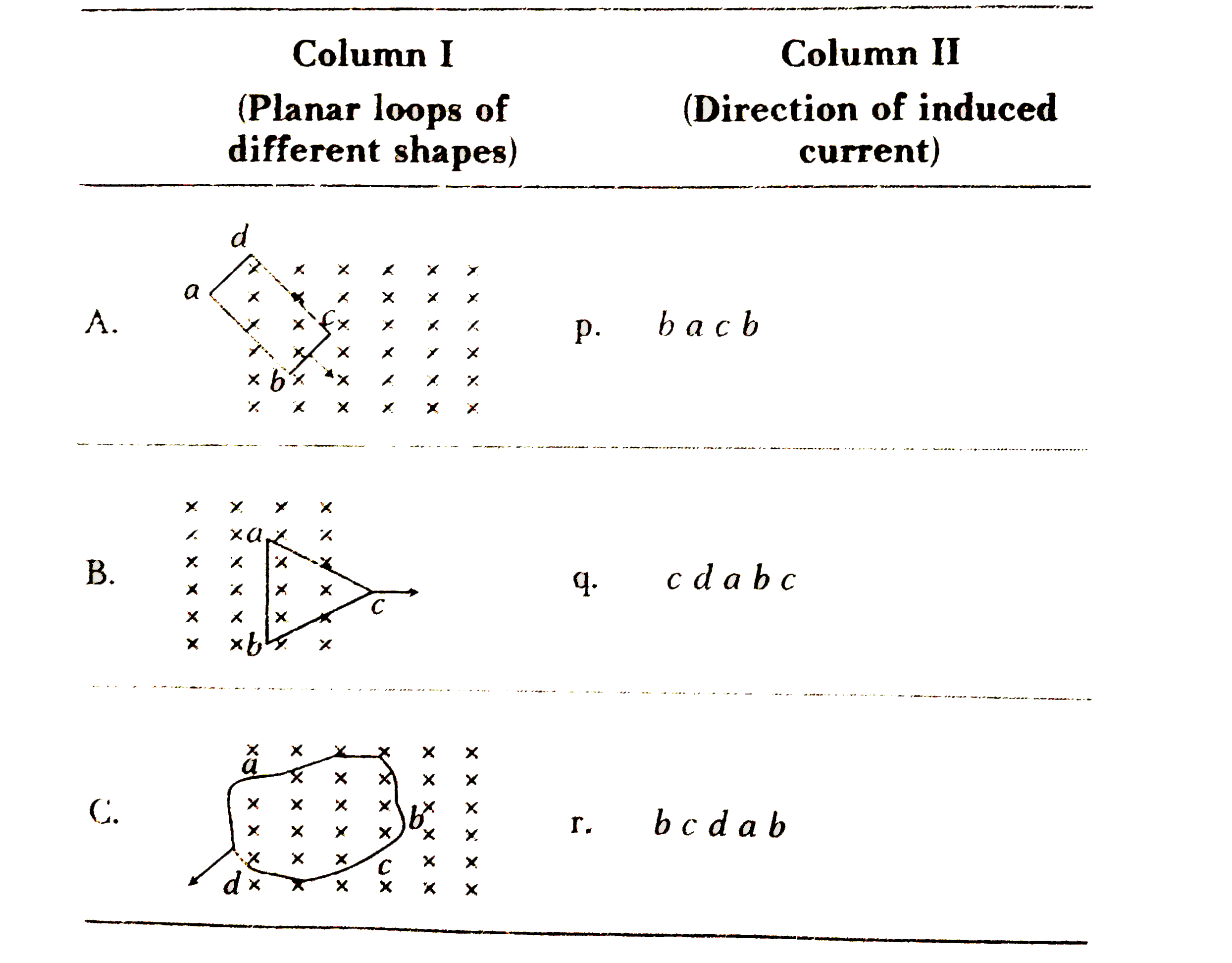Match items in Column I with those in Column II:
To solve the question of matching items in Column I with those in Column II, we will analyze each item in Column I and find its corresponding match in Column II based on the characteristics of reproduction in plants.
1. Identify the first item in Column I: Bud (a)
- Buds are a part of plants that can develop into new plants through a process called vegetative propagation. In this case, buds are commonly associated with the formation of new plants like roses.
- Match: (a) Bud → (vi) Rose
2. Identify the second item in Column I: Eyes (b)
- Eyes refer to the small buds found on potatoes. These eyes can sprout and grow into new potato plants, indicating a method of asexual reproduction.
- Match: (b) Eyes → (v) Potato
3. Identify the third item in Column I: Fragmentation (c)
- Fragmentation is a form of asexual reproduction where an organism breaks into fragments, and each fragment can grow into a new individual. This process is commonly seen in certain algae, such as Spirogyra.
- Match: (c) Fragmentation → (ii) Spirogyra
4. Identify the fourth item in Column I: Wings (d)
- Wings in this context refer to the structures that aid in the dispersal of seeds. They are often found in plants like the maple tree, where the seeds have wing-like structures for wind dispersal.
- Match: (d) Wings → (i) Maple
5. Identify the fifth item in Column I: Spores (e)
- Spores are a form of asexual reproduction found in fungi and certain plants. Bread mould is a common example of a fungus that reproduces via spores.
- Match: (e) Spores → (iv) Bread mould
Final Matches:
- (a) Bud → (vi) Rose
- (b) Eyes → (v) Potato
- (c) Fragmentation → (ii) Spirogyra
- (d) Wings → (i) Maple
- (e) Spores → (iv) Bread mould
- Buds are a part of plants that can develop into new plants through a process called vegetative propagation. In this case, buds are commonly associated with the formation of new plants like roses.
- Match: (a) Bud → (vi) Rose
- Eyes refer to the small buds found on potatoes. These eyes can sprout and grow into new potato plants, indicating a method of asexual reproduction.
- Match: (b) Eyes → (v) Potato
- Fragmentation is a form of asexual reproduction where an organism breaks into fragments, and each fragment can grow into a new individual. This process is commonly seen in certain algae, such as Spirogyra.
- Match: (c) Fragmentation → (ii) Spirogyra
- Wings in this context refer to the structures that aid in the dispersal of seeds. They are often found in plants like the maple tree, where the seeds have wing-like structures for wind dispersal.
- Match: (d) Wings → (i) Maple
- Spores are a form of asexual reproduction found in fungi and certain plants. Bread mould is a common example of a fungus that reproduces via spores.
- Match: (e) Spores → (iv) Bread mould
- (a) Bud → (vi) Rose
- (b) Eyes → (v) Potato
- (c) Fragmentation → (ii) Spirogyra
- (d) Wings → (i) Maple
- (e) Spores → (iv) Bread mould
Topper's Solved these Questions
- REPRODUCTION IN PLANTSBOOK - NCERTCHAPTER - REPRODUCTION IN PLANTSEXERCISE - Exercise (Tick the correct answer)
5 Videos
- REPRODUCTION IN PLANTSBOOK - NCERTCHAPTER - REPRODUCTION IN PLANTSEXERCISE - Exercise (Tick the correct answer)
5 Videos
- NUTRITION IN PLANTS BOOK - NCERTCHAPTER - NUTRITION IN PLANTS EXERCISE - Exercise
21 Videos
- RESPIRATION IN ORGANISMSBOOK - NCERTCHAPTER - RESPIRATION IN ORGANISMSEXERCISE - Exercise (True .T. and False .F. )
5 Videos
Similar Questions
Knowledge Check
match items in column I with those give in column II
 AA-I B-II ,C-III , D -IV , E- VBA - II , B-I , C - III , D - IV , E -VCA-III , B-I , C-II , D-IV , E- VDA - V , B- II , C-III , D- IV , E - I
AA-I B-II ,C-III , D -IV , E- VBA - II , B-I , C - III , D - IV , E -VCA-III , B-I , C-II , D-IV , E- VDA - V , B- II , C-III , D- IV , E - IMatch item in column I with those given in column II. Column 1
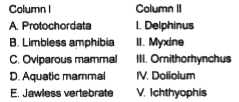 AA-V, B-IV, C-III, D-I, E-IIBA-IV, B-V, C-II, D-I, E-IICA-IV, B-V, C-III, D-II, E-IDA-V, B-III, C-I, D-II, E-IV
AA-V, B-IV, C-III, D-I, E-IIBA-IV, B-V, C-II, D-I, E-IICA-IV, B-V, C-III, D-II, E-IDA-V, B-III, C-I, D-II, E-IVMatch items given in Column I with those given in Column II
 AA = t, B= r, C = p, D = sBA = q, B = s, C = r, D = pCA = s, B= r, C = q, D = tDA = r, B = t, C = p, D = q
AA = t, B= r, C = p, D = sBA = q, B = s, C = r, D = pCA = s, B= r, C = q, D = tDA = r, B = t, C = p, D = q
Match the item given in Column I with those in Column II
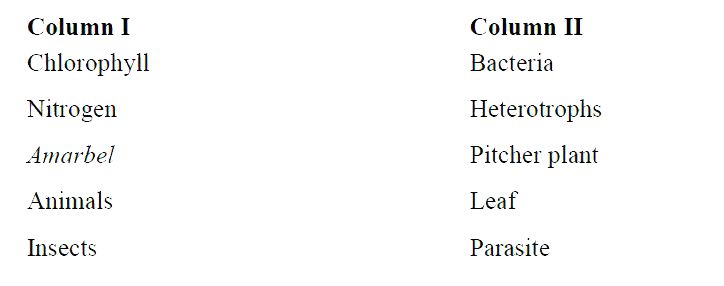
View SolutionMatch the items of column I with those of column II:

View SolutionMatch the items of Column-I with those of Column-II:
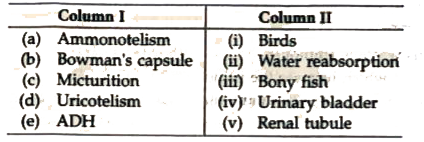
View SolutionMatch the items of Column I with those given in Column II :
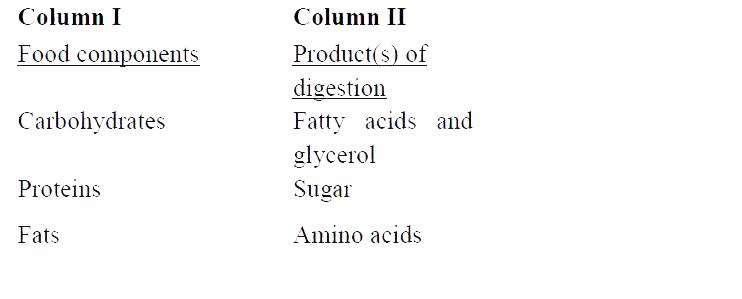
View SolutionMatch the items of Column I with that of Column II:
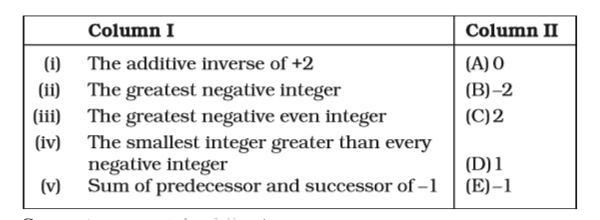
View Solution


